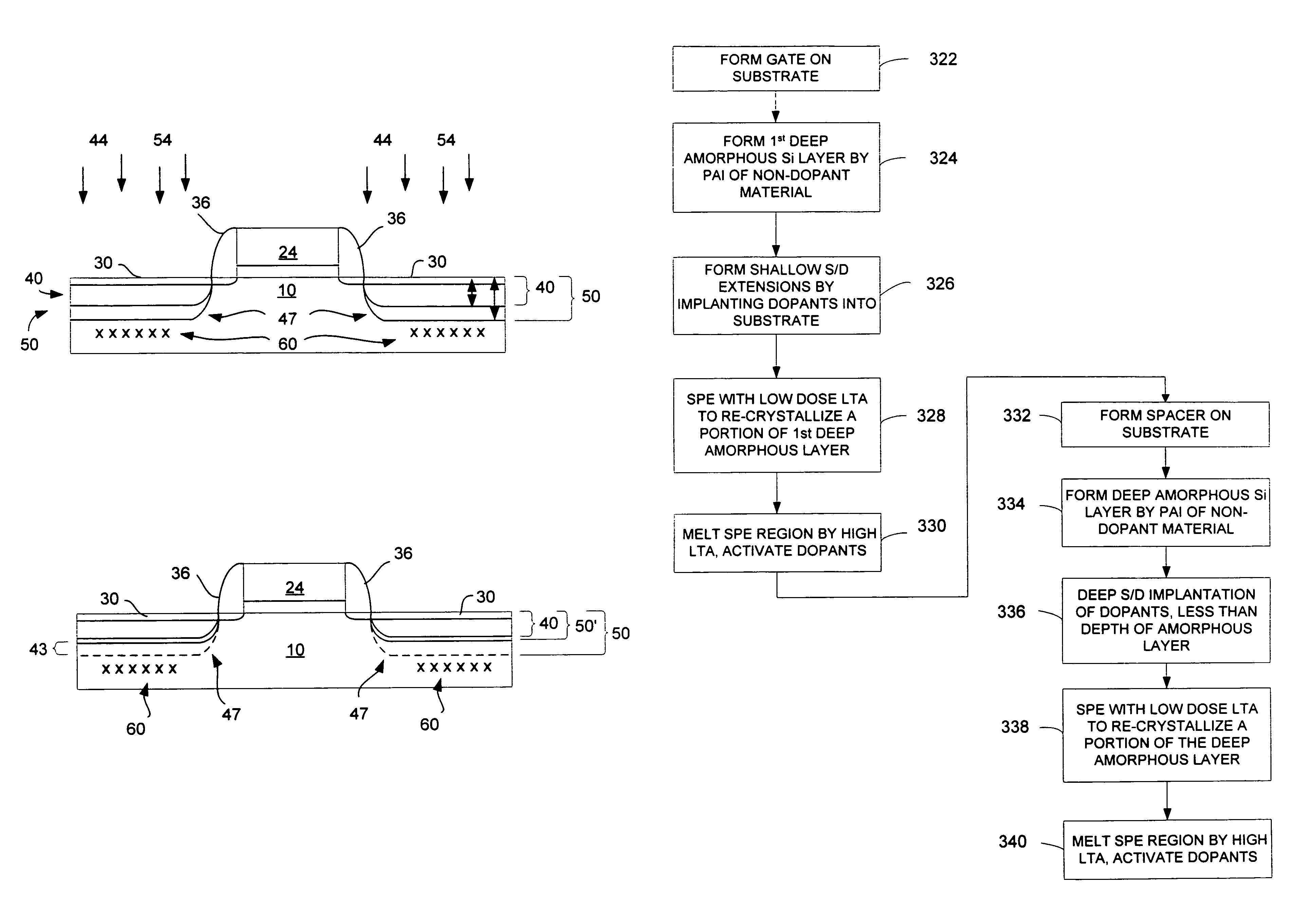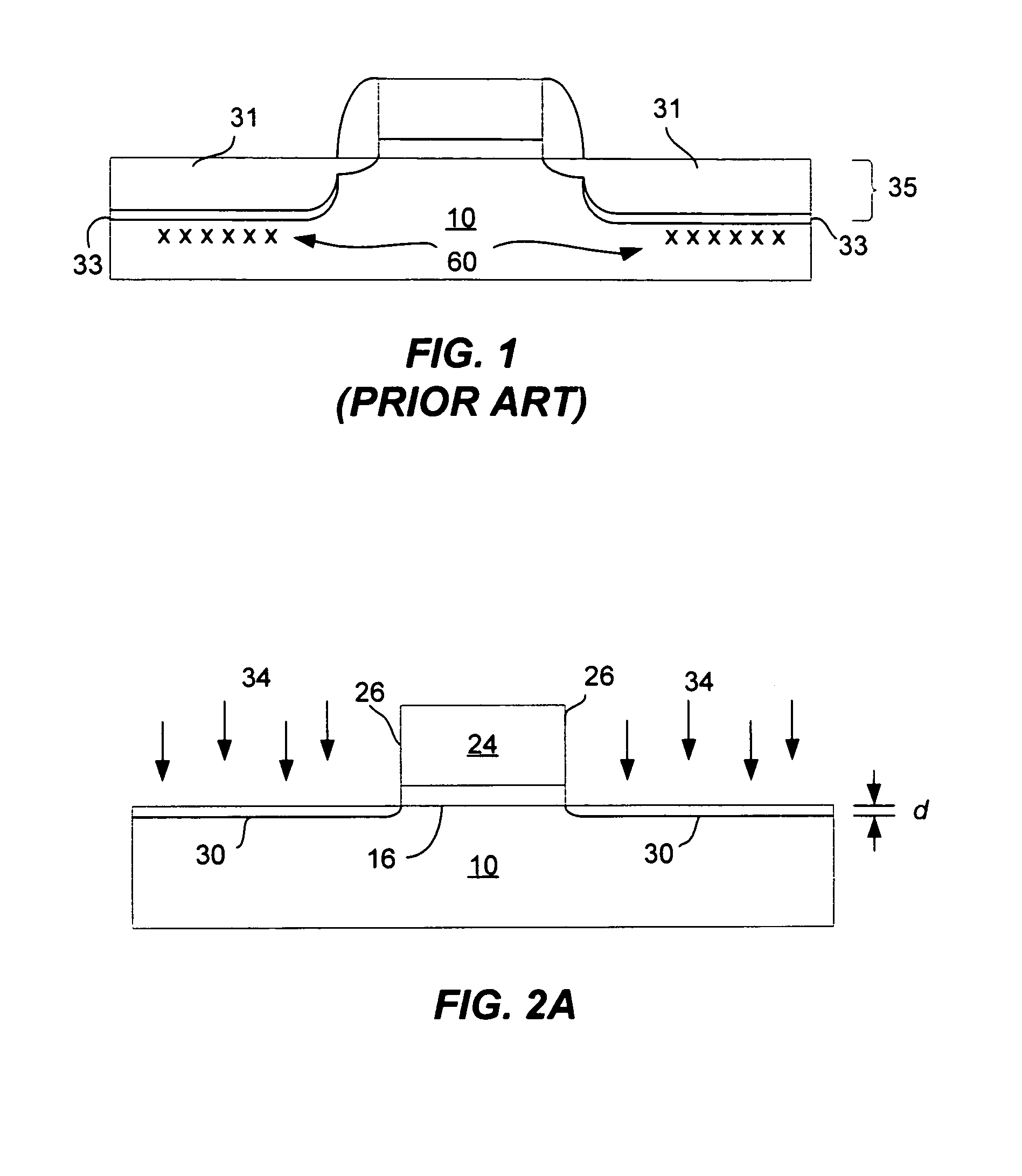End-of-range defect minimization in semiconductor device
a technology of semiconductor devices and defects, applied in the field of minimizing end-of-range defects and junction leakage, can solve the problems of junction leakage and end-of-range defects formation, and achieve the effect of significantly reducing junction leakage as a result of end-of-range defects
- Summary
- Abstract
- Description
- Claims
- Application Information
AI Technical Summary
Benefits of technology
Problems solved by technology
Method used
Image
Examples
Embodiment Construction
[0022]The present invention addresses and solves, at least in part, the problem of junction leakage as a result of end-of-range defects at the junctions of the source / drain regions of a semiconductor device. Various embodiments of the present invention may take the form of a method for fabricating a semiconductor device that leaves the end-of-range defects significantly deeper than the junctions of the active source / drain regions. The region between the end-of-range defects and active source / drain regions may be referred to as a “buffer”. The depths of various regions or layers provided herein are illustrative, and not meant to be restrictive. It is the relative depths of the regions and layers discussed herein that is significant.
[0023]In any of the various inventive methods, a gate electrode may be formed on a substrate, as is customary. Such methods also comprise forming deep amorphous silicon regions by pre-amorphitization implantation (PAI) within the substrate. Source / drain re...
PUM
| Property | Measurement | Unit |
|---|---|---|
| depth | aaaaa | aaaaa |
| depth | aaaaa | aaaaa |
| depth | aaaaa | aaaaa |
Abstract
Description
Claims
Application Information
 Login to View More
Login to View More - R&D
- Intellectual Property
- Life Sciences
- Materials
- Tech Scout
- Unparalleled Data Quality
- Higher Quality Content
- 60% Fewer Hallucinations
Browse by: Latest US Patents, China's latest patents, Technical Efficacy Thesaurus, Application Domain, Technology Topic, Popular Technical Reports.
© 2025 PatSnap. All rights reserved.Legal|Privacy policy|Modern Slavery Act Transparency Statement|Sitemap|About US| Contact US: help@patsnap.com



